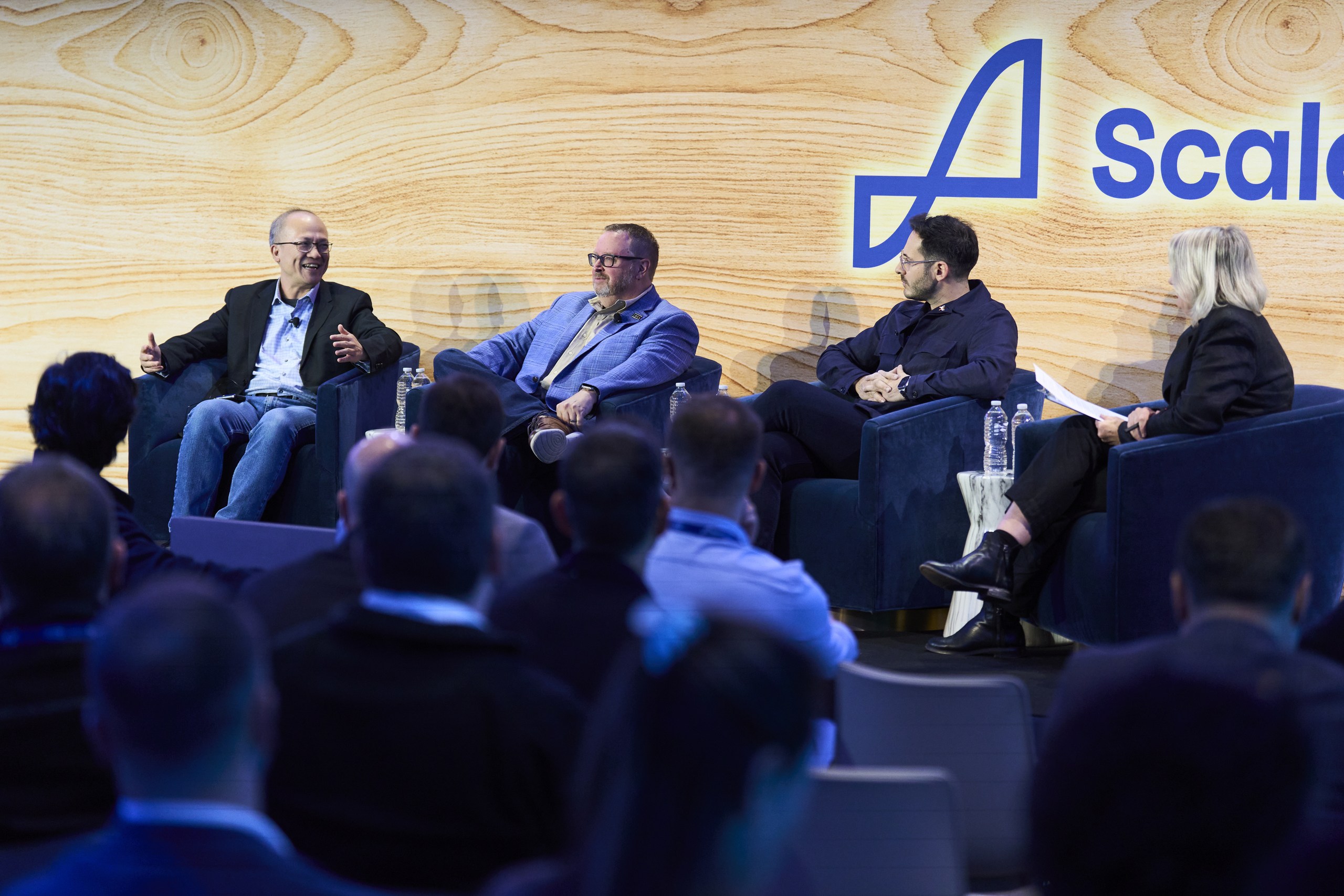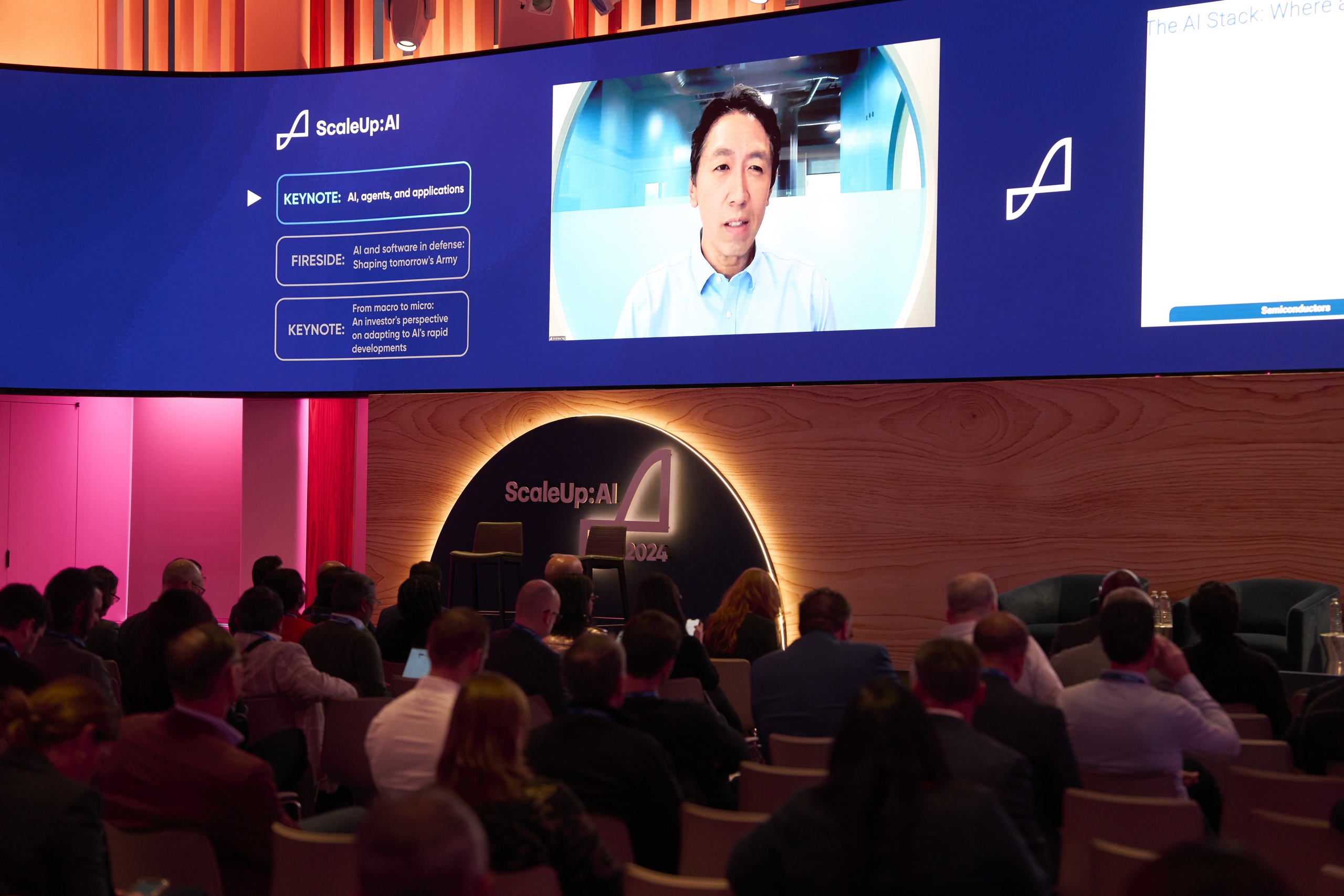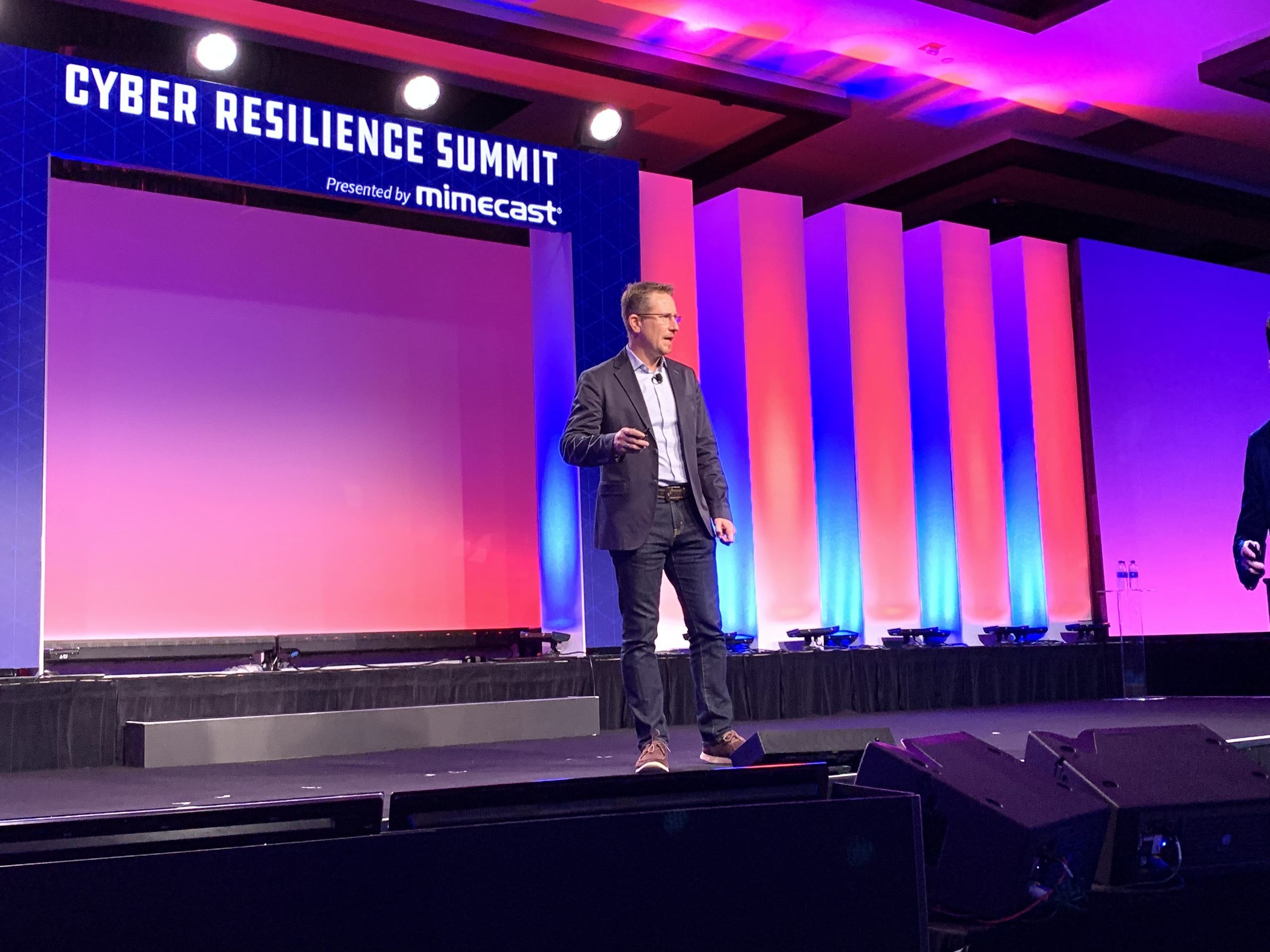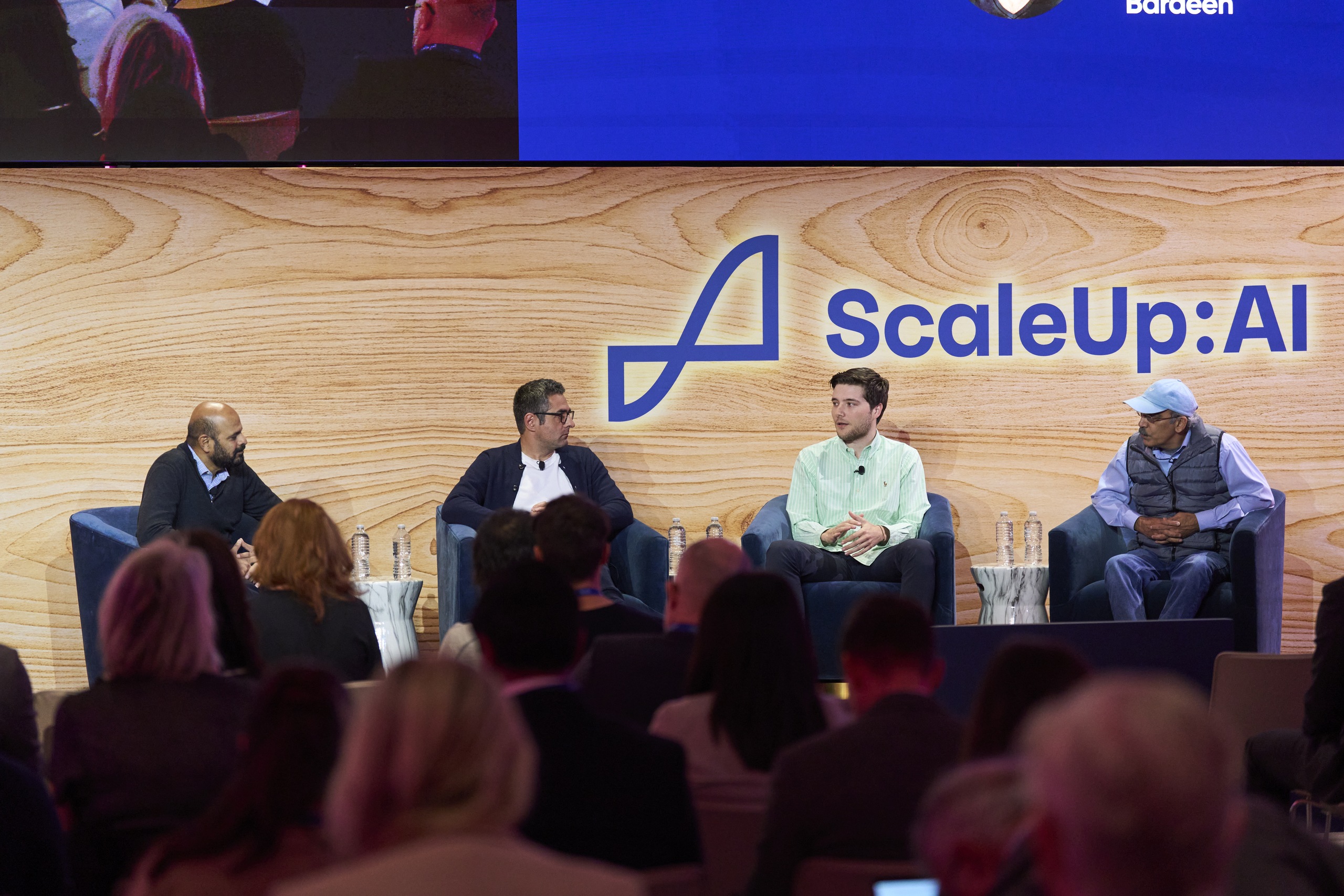Top-down adoption, ROI, and the human touch: ScaleUp advisors share AI advice for leaders in 2025

In January, we broadly asked our Onsite team of experts what should be top of mind for ScaleUp leaders and founders heading into 2025. Based on their work with hundreds of portfolio companies, 26 advisors weighed in with their predictions, spanning topics from efficiency metrics to talent trends. Unsurprisingly, AI was mentioned throughout, and given the community’s response to the original article, we gathered four of Insight Partner’s advisory leaders to double-click into their 2025 predictions and advice for ScaleUp leaders.
Managing Director Hilary Gosher and Onsite experts Hilary Headlee, advisory lead on the growth team, and Senior Vice Presidents, Meg Fitzgerald and Richard Sgro, shared their key AI predictions for 2025 — and what leaders need to do to stay ahead.
Prediction #1: Ad hoc AI will put you at a major disadvantage
In 2025, we expect to see a major shift towards company-wide, top-down AI adoption. In marketing functions alone, recent estimates suggest that AI-driven productivity could create efficiency gains equivalent to between five and 15 percent of total marketing spend — worth roughly $463 billion annually.
Companies that lag behind will be putting themselves at a major disadvantage with market leaders, and leaders-to-be, already planning and rolling out AI tooling. However, we’re seeing two contrasting approaches to AI governance taking shape among our portfolio companies: decentralized and centralized.
The former continues the siloed, team-by-team approach, where individuals or departments automate tasks within their own functions. While this drives small-scale efficiencies, its wider impact is limited. A centralized approach to embedding AI, particularly into financial and operational DNA, will maximize its impact.
Fitzgerald says that CEOs should start by visualizing its effect on core unit economics and financial metrics, then align leadership on what change looks like — across people, processes, and programs — and from there they can execute.
We’re increasingly seeing AI embedded in early stage companies from day one, which Sgro notes gives them a competitive edge versus large incumbents. “AI is part of the substrate of these organizations. It’s part of the strategy from the start. That leanness and those small, flat teams enable very quick experimentation, iteration, and adoption.”
“AI is part of the substrate of these [early stage] organizations. It’s part of the strategy from the start. That leanness and those small, flat teams enable very quick experimentation, iteration, and adoption.”
For more established companies, the challenge is adopting AI with an intentional, structured approach, but at the same pace of innovation as their more agile, early stage peers. Sgro explains that this can prove challenging when many often face years of misaligned or unstructured data. Before AI can truly drive value for these firms, teams need to clean up data, define a shared taxonomy, and create alignment — only then can they truly leverage the power of AI.
Prediction #2: ROI will be the AOTY for GTM
Or, to spell it out, Return on Investment (ROI) will be the Acronym of the Year (AOTY) for Go-to-Market (GTM).
Put simply: AI needs to prove its worth.
One of the leading criticisms of AI — especially following the release of DeepSeek — is that running costs don’t always justify the outputs. This criticism exists at a company level too, where we’re seeing many leaders struggle to measure the ROI of their AI investments.
2025 is the year that companies and their leadership teams have to get serious about this essential metric — and there’s a simple way to do it. “Look at pre-AI, ensure you’ve got a timestamp there, and then look at post-AI and understand what that difference is,” says Fitzgerald.
Companies will need to quickly shift their GTM strategy beyond traditional metrics like click-through rates, and website traffic. Instead, the focus should be on how AI is moving core levers like customer acquisition cost (CAC), net retention rate, and gross margin — true indicators of growth.
Fitzgerald urges leaders to consider AI’s ability to unlock more of the Total Addressable Market (TAM), and capture their full market potential. “You now have the tools to truly target your entire universe. It’s not just devoting resources to your tier one segment or your tier one accounts.”
“You now have the tools to truly target your entire universe. It’s not just devoting resources to your tier one segment or your tier one accounts.”
To maximize this potential, businesses need to strategically allocate capital across people, technology, and programs, says Headlee. “It’s not just [about] headcount, but what are some of the responsibilities which can be consolidated, or moved, or put through a programmatic area?”
ROI gains can extend beyond AI, especially for those who build an ecosystem of strategic partners. Companies that align with partners who share the same ICP, and have complimentary value propositions can drive joint GTM strategies. As Fitzgerald says, “It’s going to reduce CAC, because it’s going to get your brand in front of more eyeballs. It’s going to build trust more quickly, which is going to build qualified deals faster.”
Prediction #3: Human excellence will be even more valuable than before
Much of the debate around AI focuses on its potential to remove humans from the work ecosystem, but we see the opposite happening.
As AI raises the bar for efficiency, the human touch will become even more important — it can’t be fully replicated by technology. This means a renewed appreciation for in-person connection, and the unique personalized experiences humans bring to the table, allowing for far more impactful GTM approaches.
With AI increasingly being integrated into sales workflows for example, every seller must master what the best have always done — “Building empathy and authentic human connection, and being confidently curious,” according to Sgro. “If you’re not training and enabling your team to do these things, and do these things well, you’re going to be at a strong disadvantage in this current selling environment.”
“Building empathy and authentic human connection, and being confidently curious… If you’re not training and enabling your team to do these things, and do these things well, you’re going to be at a strong disadvantage in this current selling environment.”
AI is also redefining branding, doing the heavy lifting so humans have the time to react quickly to changing brand sentiment. Modern word-of-mouth isn’t just about people talking — its AI monitoring the entire digital conversation around a brand. The smartest companies will start using these tools to stay plugged into real-time brand sentiment.
“They can then leverage those insights to continuously update campaigns, ensure messaging is cutting edge, ensure they’re talking about the right ROI validation, and the right proof points,” says Fitzgerald. By taking on the grunt work, AI will free up teams to focus on strategy, creativity, and the pivots that come from human excellence and initiative, driving true impact.
Prediction #4: The future workforce will balance AI, flexibility and responsible governance
Post-pandemic, how we work is more fluid than ever. As AI-powered support expands, and the definition of an ‘employee’ evolves, we see companies shifting towards a blend of employment models, rather than solely relying on traditional full-time roles.
This transition will require a fundamental rewiring of how businesses approach employment, and leaders need to start thinking about this evolution today. It seems futuristic, but is already starting to happen, for example, AI is already playing a crucial role in resource allocation.
“We now have access to more real-time insights, so we’re able to continuously optimize the productivity of our teams, and we’re able to very quickly identify skill gaps,” says Fitzgerald.
These insights will help companies measure cross-functional alignment, and track workforce efficiency in new ways. “AI is going to help us drive smarter, more efficient resource allocation, and bookings per full-time employee (FTE) is something that every go-to-market team will probably start looking at more frequently,” she adds.
However, this shift isn’t just about efficiency. “Companies need to confirm what that looks like, not only from a people lens, but through an ethics lens, a legal lens, not to mention security, privacy, and compliance, with all the data that might be shared and used in those different areas,” says Headlee.
“Companies need to confirm what [responsible AI use] looks like, not only from a people lens, but through an ethics lens, a legal lens, not to mention security, privacy, and compliance, with all the data that might be shared and used in those different areas.”
At the same time, the balance of power in the workforce is shifting. The remote work debate has become its own culture war, and AI will complicate things further. A new category of “power players” is emerging — employees who have mastered genAI to automate their own work, allowing them to contract with multiple companies instead of holding a single full-time role.
Companies may soon have to navigate this changing dynamic, and convince employees to come in when their colleagues or even bosses are a robot. They will need to balance AI-driven efficiencies with ethical governance, workforce flexibility, and new models of employment engagement. Rather than relying solely on full-time employees, companies will blend full-time, remote, part-time, and AI-driven roles.
Hilary Gosher sees AI becoming a true collaborator in this mix. “I really want to resource across that spectrum … and I want to use AI agents as a resource as well … I can definitely see an AI agent being my colleague, and doing a separate set of functions, all aligned behind a workflow where I’m engaged in some of it, and the agent is engaged in other parts of it.”
This shift will redefine collaboration and requires organizations to begin rethinking how they structure, manage, and scale their workforce in a rapidly evolving AI-integrated world.











